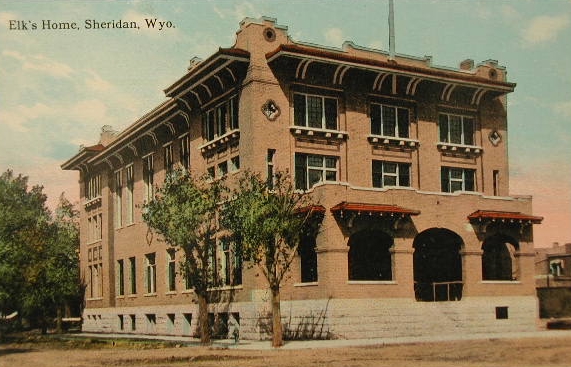
Sheridan Elks Lodge No. 520., 45 W. Brundage, approx. 1915.
The Lodge is the oldest Elks lodge in the
state. The building was constructed at a cost of $65,000. For views of other
historic Elks lodges see Casper, Cheyenne, Cody, Laramie, Lusk, Rawlins, and Rock Springs pages.
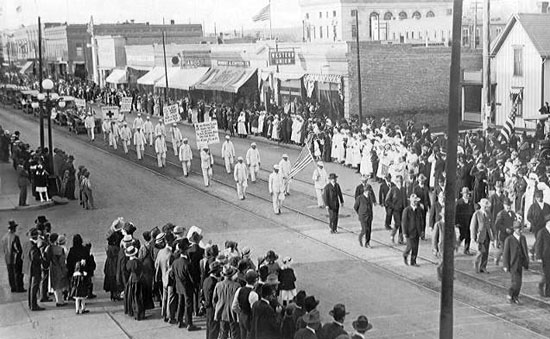
Sheridan, parade, 1918.
The three-story building seen over the roof of
the Western Union office is the City Hall on Grinnell Ave.
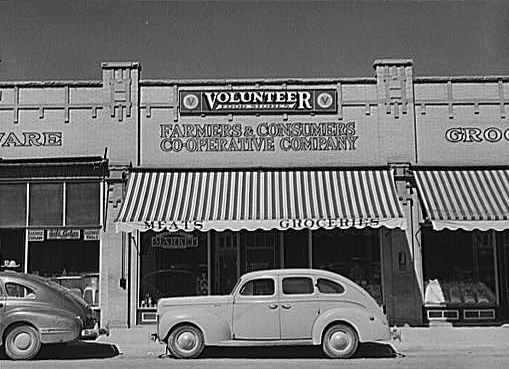
Sheridan, 1941, photo by Marion Post Wolcott.
Marion Post Wolcott (1910-1990) was a compatriot of Arthur Rothstein,
discussed on the Medicine Bow page, and of Russell Lee, discussed with
regard to Cambria, in the Farm Security Administration. During the mid-1930's,
she worked in Germany and Austria and, as a result of her exposure to the
Nazi movement, became an ardent activist in leftist causes. Following, the
return of Paul Strand from the Soviet Union, Wolcott worked with him on his
film of union organization in the South, People of the Cumberlands. She later
worked for several magazines including Vogue before joining in the Farm Security
Adminstration upon the recommendation of Strand. Following her marriage in
1942 she discontinued professional photography until the 1970's when she documented,
among other things, the counter-culture in San Francisco.
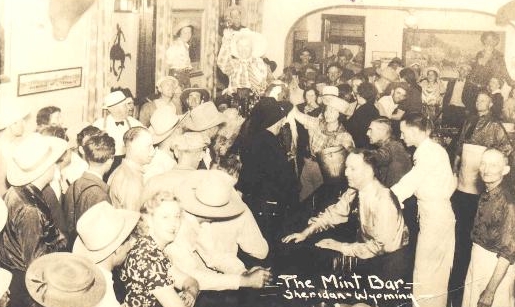
Interior, the Mint Bar, undated
Note, next to the gentleman in the black hat and shirt,
and next to the young lady with
the bucket, is a horse.
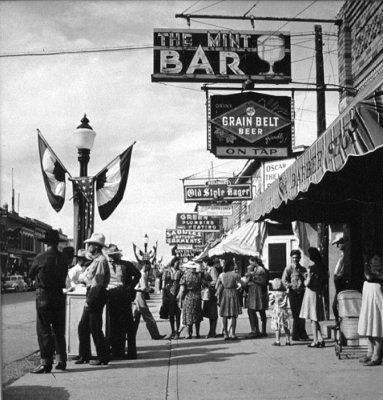
Left, The Mint, August 1941, photo by Marion Post Wolcott.
The Mint Bar, still in business at 151 N. Main St., was established in 1907.
The practice of riding horses into saloons was noted, with perhaps some sense of
disapprobation, by Theodore Roosevelt in his book Ranch Life and the Hunting Trail.
Roosevelt observed that cowboys "when drunk on the villainous whiskey" would "cut mad antics" such
as riding their horses into the saloons. Indeed, the custom continues. A website
devoted to the Town of Ten Sleep
notes, with apparent pride, that photographs have
been taken of cowboys and their horses in the town's two saloons. One of Webmaster's son's
fraternity brothers allegedly modernized the practice by driving his pickup truck into
a saloon
During prohibition the Mint Bar continued to
operate, although quietly. Upon the repeal of prohibition it officially reopened
and operated slot machines, roulette and gaming tables in the back. In the
late 1940's it was remodeled to the style seen below.
The bar's interior decorations include an 8 ft. 4 inch long rattlesnake hide having
37 buttons on its tail, a copy of Russell White Bear's map of the Custer
Battle and photos by Charles J. Belden. Its interior has also been featured in a French
television commercial. "Grain Belt" Beer, featured on the sign,
has no particular relationship to Sheridan or Wyoming.
It was brewed in Minneapolis and later in Omaha. Its history dates back to 1850,
when John Orth, a German immigrant commenced brewing in Minneapolis.
In 1893, the brand name was adopted. The original brewery closed in 1976.
The brand name still continues. Sheridan did, however, have its own brewery,
the Sheridan Brewery, maker of "Sheridan Export" and "Sheridan Pale" remained in
business from 1885 to 1954.
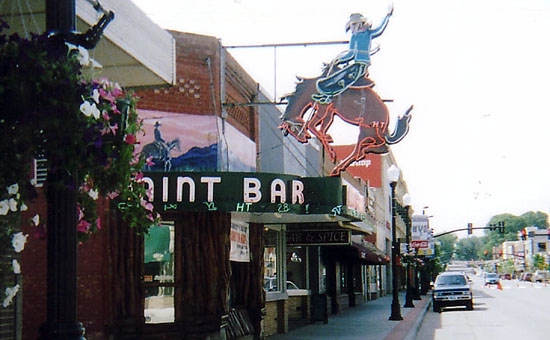
Mint Bar, 2005. Photo by Geoff Dobson
Next page: Dayton and Ranchester.
|